If you need cash for your everyday purchases or other everyday uses, and the faster the better, a cash advance might sound like a good way to get it. But before you head out to a branch or an automated banking machine (ABM) to get your funds, we'll help you evaluate cash advances on a credit card from all angles and suggest some alternatives to help you feel more confident in the decision you make.
Most credit card companies let their cardholders take money out from their credit card limit in the form of a cash advance. In exchange for this service, they typically charge a fee for it as well as a higher cash advance annual percentage rate (APR) than when you use your card for regular purchases.
There're also often limits to how much of a cardholder's credit limit can be used for cash advances.
Cash advances on a credit card can be completed in a few ways, including over the phone, at the ABM and at a bank branch.
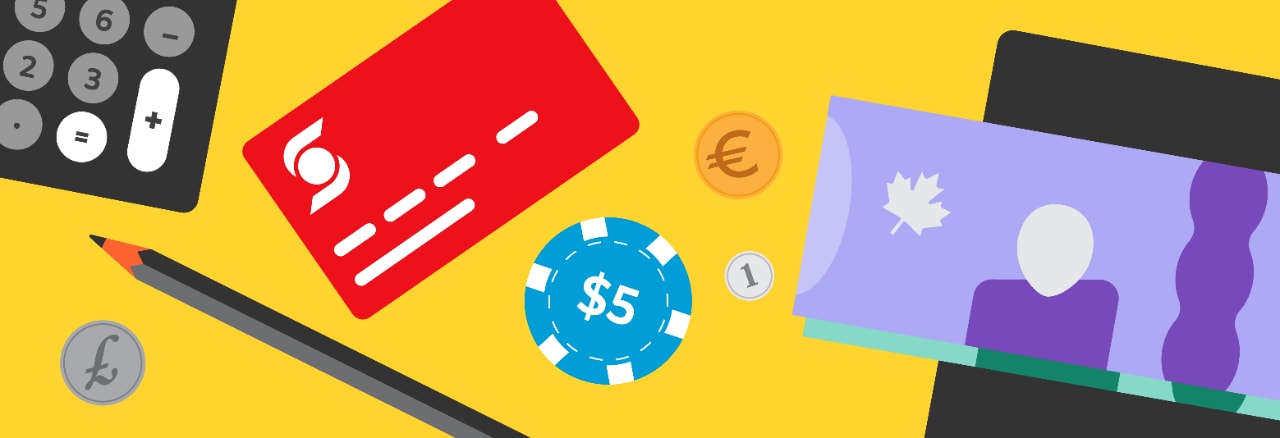
Some credit card transactions that fall under cash advances
- Wire Transfers
- Foreign Currency (in cash)
- Travelers' Cheques
- Money Orders
- And Purchase of Gaming Chips
Credit card issuers can also treat several other transactions they call cash-like transactions as cash advances, so make sure to check your credit card agreement to confirm what qualifies.
Wondering what happens when you take a cash advance? What you should know is that interest starts to accrue on those funds immediately from the date of the transaction, rather than after the interest-free grace period that applies to your normal purchases each month.
You may also have to pay a higher cash advance APR on the amount you borrow (as noted above, the APR on cash advances is usually higher on your card than the APR that applies on your purchases).
- Impact on your credit score: Taking out a cash advance doesn't have a direct impact on your credit score. However, if you struggle to make payments on your card or if your credit card balance is increased to the point that it makes up more than 30% of your credit limit, your credit could be affected. If you haven't already, be sure to learn what affects your credit score.
- Cash advance take out limits: If you're considering a cash advance, you might be wondering how much you can take out. Turns out, it depends on the card, but many credit card issuers limit the amount that can be taken out in cash advances to a percentage of the card's total limit. For example, your card might have a cash advance limit of 30% or 40% of the total credit limit on your card. Make sure to check with your credit card issuer on these details.
- The cost of a cash advance: Calculating the costs of a cash advance before you take one out is key to evaluating if it's the right strategy for you based on your personal financial situation. A cash advance can cost you in a few ways. For one, you may have to pay a flat rate fee for each cash advance. In most banks in Canada, it will cost you around $5 for each cash advance and $7.50 for each cash advance outside Canada (though this fee may vary per credit card issuer). If you get the cash advance from an ABM, there might also be an additional ABM fee to pay on top of that.
The primary costs of a cash advance generally come over time in the form of interest charges. Many credit cards charge a higher APR for cash advances than other credit card purchases. For example, a credit card company might charge 20% APR on normal purchases and 25% APR on cash advances. That extra 5% could add up. And, as noted above, that APR starts from the date of the transaction – there is no interest-free grace period on cash advances.

What's more, most credit card companies won't put your minimum payment towards the balance that you choose – there is a payment allocation set out in your credit card agreement. In some cases, if you make your minimum payment only, lower interest rate balances may be paid before higher interest rate balances or if you pay more than your minimum payment in Canada, an issuer may allocate your payment proportionately to the APRs on your card. This means you could be paying a higher interest rate on your monthly payments for your cash advance amounts for a while.
Cash advance APR
So, how much interest will you really be paying on your cash advance? Many credit card companies charge a higher APR on cash advances than they do on purchases. Your credit card should list its cash advance APR in the terms of your credit card agreement or disclosure statement and on your statement each month.
Before you take out a cash advance, it's important to understand the benefits and disadvantages that may apply to you when taking one out. If you need cash for an emergency and have no other way to access it, you're not alone. People can sometimes turn to cash advances to help them out in a pinch.
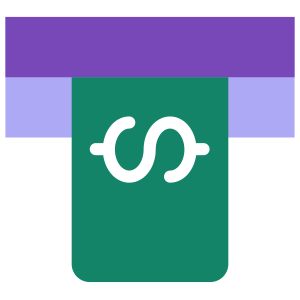
Quick access to funds
The biggest benefit of a cash advance is access to cash quickly when you can't access it through other means. This can be extremely helpful in financial emergencies, like if your car suddenly needs a new tire while you're travelling through the middle of nowhere and the mechanic who saved the day doesn't take credit cards.
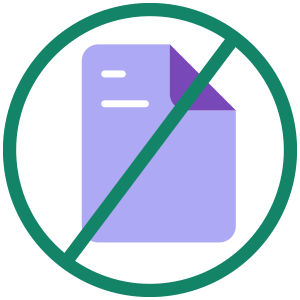
No need to apply for additional credit
Given that a credit card cash advance is a transaction type on your existing credit card, if you need to access cash quickly, you can simply use your existing card to get it. However, it is important to note that although you’re not applying for extra credit, hence no hard credit check, your credit score might still be affected as your credit utilization ratio could now be higher (for example, if you make cash advances that amount to 30% or more of your credit limit).
It's time to look at the disadvantages of cash advances. Accessing money quickly via a cash advance has some downsides. You might be getting out of a pinch — but it could hurt your wallet in the long run.
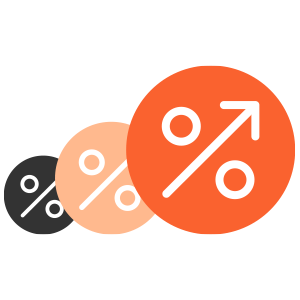
Typically, higher interest rates
The biggest downside to a cash advance is the higher interest rate. Usually, you'll pay more on cash advances versus normal purchases on your credit card as a cash advance APR is oftentimes several percentages higher than your normal APR.
Credit card interest rates are already higher than interest rates on other forms of credit. If you're able to access cash at a lower rate, other than through your credit card you're better off doing that.
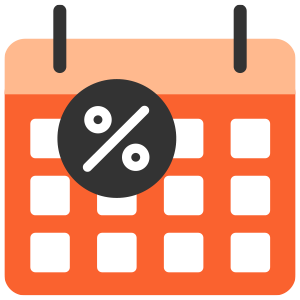
No interest-free grace period
While most purchases on your credit card come with a 21-day interest-free grace period on new purchases each month, before any is charged, cash advances often have no such interest-free grace period. Interest begins accruing immediately after the money hits your hands.
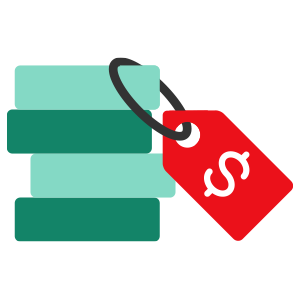
Cash advance fees
Cash advances come with a fee. In Canada, this is generally $5 if the cash advance is made in Canada or up to $7.50 if the cash advance is taken outside of Canada. If you're accessing a small amount of money, the cash advance fee could end up being a significant percentage of your transaction, so consider taking one larger amount instead of a few smaller ones.

You won't collect rewards
Most companies don't extend credit card rewards to cash advances. That means you won't get to collect points or cash back rewards for fun things on the money you take out. No one likes missing out on movies, travel or a free dinner out!
Don't think a cash advance is right for you? If you need cash right away, a cash advance might be a good option if you consider the pros and cons of it. But if you have more time, you might be able to access funds in other ways.
Overdraft protection
Some bank accounts give you overdraft protection up to a certain amount. And it's not only limited to accidentally taking out $20 over your balance. Indeed, some banks even offer protection up to $5,000. That means that you might be able to withdraw the extra money you need from your bank account either without a penalty or at a low interest rate. Overdraft protection often comes at a cost though, so check with your bank first as there may be different fee options depending on how often you think you might need to use it.
Line of credit
A line of credit is a low interest revolving credit vehicle. You may be able to apply for a personal unsecured line of credit (ULOC) or a secured home equity line of credit (HELOC). These types of credit accounts are similar to credit cards in that they are revolving credit, which you can take out and pay off as needed. The best part? You can take out the money in cash (up to your credit limit). As there is no interest -free grace period on an advance from a line of credit, interest will apply to the amount of your advance from the date you take out the money. So all in all, having a line of credit for an emergency is likely a better solution than a cash advance, however you should always review the interest rate and fees on the financial products you are applying for.
Personal loan
Another alternative to a cash advance is getting a personal loan. While it doesn't offer the convenience of a line of credit, it's often a better alternative to a cash advance.
In this case, you borrow a set amount and it's given to you all at once. You then have to repay that amount in equal payments – with the interest at the rate that applies to your loan - over a defined loan term. You can often repay it faster, but you can't skip payments or pay a lower amount each month. That makes it less flexible than a line of credit but a good choice if you need a larger amount of money and know you'll be able to make regular repayments.
Also read: Loans vs. lines of credit, which one is right for you?
Credit cards
If you can pay for something with your credit card rather than in cash, you're better off doing that. You won't pay an ABM fee, you won't have a higher interest rate to contend with for a cash advance, and you could earn rewards on that purchase if you credit card is associated with a rewards program. That said, sometimes you just need cash.
Ready to get a cash advance? After reviewing the pros and cons of a cash advance, getting a cash advance is a simple procedure that you can do at any ABM or branch. All you have to do is go to an ABM or a financial institution. You can then take the cash out directly from the machine with your credit card or ask the teller to do a cash advance for you.
Now that you've read through all the benefits and drawbacks, it's likely clear that an emergency fund should always be your ‘go to’ strategy for unexpected situations. However, life isn't perfect, and we can't anticipate everything that may come our way. A cash advance on your credit card could help in those cases where there are no other better options. However, think ahead and consider a chequing/savings account or a line of credit to provide a safety net in case of an emergency where you'll need cash.


